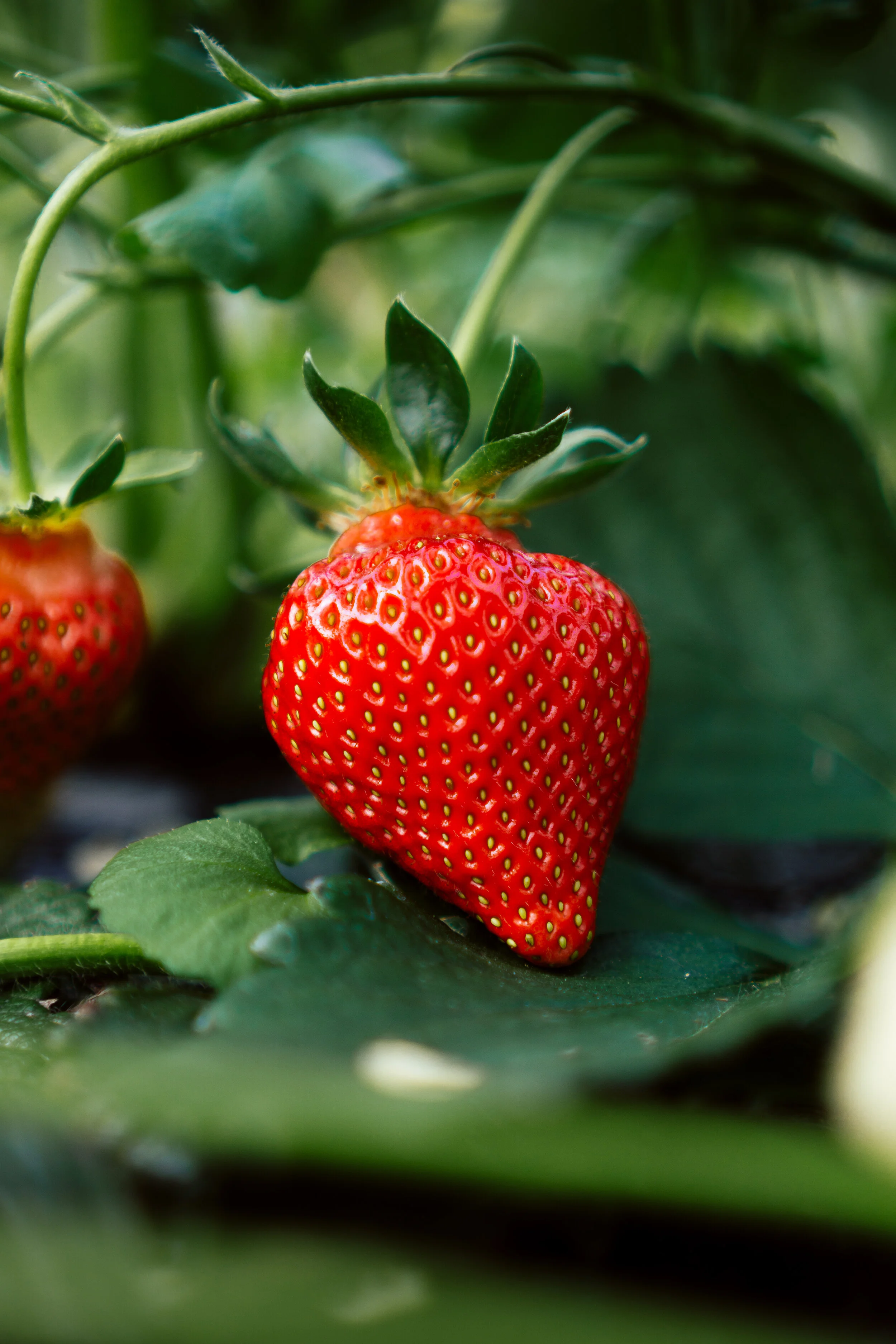Grow Your Own Sweet, Fresh, Healthy Strawberries!
If you’ve never eaten a ripe strawberry right off the vine…well, I feel sorry for
your taste buds. There’s no comparison of store-bought strawberries to freshly
picked in your own yard or at a pick-your-own farm. And isn’t it wonderful that
something that tastes so good is also so good for you? Let’s explore the health
benefits and how to grow strawberries!
I’m tired of buying strawberries at the grocery store and even after examining the
package carefully I still have a moldy strawberry or two in there! And if mold
is in the package, it won’t be long before the rest of the berries in there
will develop mold. I don’t equate this with health benefits! The fresher the
strawberries are, the more nutrients and better flavor they’ll have for you.
They’re low calorie, too.
A Part of the Rainbow—Eat it Up
So what are the health benefits? Any fruit with rich color
is automatically of benefit to you. We’re told by nutrition experts to eat the
rainbow. Strawberries are part of that rainbow with:
fiber
potassium
vitamin C
antioxidants
raise your good cholesterol
lower blood pressure
anti-inflammatory
and so much more!
Where to Get Plants
You can find strawberry plants at your local nursery and garden center. They will
usually stock the most popular, and sometimes only one variety. Last week I
talked about ordering online. Yes, you can order strawberry plants from any of
the garden catalog websites. You will be able to find information about the
different varieties and types, and you will find a larger selection than you
will shopping local—not that I want to take business away from our local small
businesses. Orders are often in minimum numbers of 10-25 plants and they will arrive with instructions for planting them.
What to Choose
There are three types:
June bearing. These are just what they sound like—they produce most
of their crop in June and then they are done.
Everbearing. Well, yes and no. They too will produce most of their crop in
June but often it is a bit smaller than that of June bearing plants. Everbearing
will then produce another smaller crop later.
Day-neutral. Again, major production is in June.
Then, these plants will continue to produce berries here and there into fall—great
for wandering out to the garden and popping these little red treasures in your
mouth right there. These later berries will be smaller but still tasty. This
type of strawberry plant was developed from the everbearing strain.
Growing some of each will give you more berries all through the growing season.
Get Them Planted
Ever mindful of our backs and joints, there are options for planting and harvesting your strawberries.
A strawberry patch. You’ll plant in rows and pay attention to the distance between each plant. This is because your plants will multiply by sending out runners with a baby plant on the end. If you don’t want them to do that you can clip and toss the baby plants. That seems cruel as here are bonus plants for you to expand your patch without having to spend more money.
The patch means lots of bending over to take care of the plants and harvest the berries.Minimize bending over with multi-level strawberry planters. Some are like a pyramid with two or three levels and are round or square in shape. These save space and can be part of your landscaping.
Towers and pots. Towers are like a tall tub with cutouts for putting the plants in. They will grow and cascade down the sides of the tower and are quite pretty when covered with the green foliage and red berries. Pots are often made of clay or ceramic and like the towers have cutouts for the plants but hold fewer than towers.
For the second and third options there will still be some bending for the lower layers but the grandchildren will be happy to help you with those.
How to Take Care of Them
Be sure to keep watering your berry plants through the
summer even if they aren’t producing. They need water to stay healthy and to
produce the next crop. If they’re in a multi-level planter, raised bed, or pots
they need extra watering in hot weather. Mulching them helps keep weeds down, the
soil moist and a bit cooler for healthy plants.
Some people treat strawberry plants as annuals and remove
them at the end of the growing season, buying new plants each spring. If you
treat them as a perennial they will grow and produce again for several years.
They need to be heavily mulched in the fall to get them through freezing
winters. It may be more trouble than you want to go through but it can work. I
had the same strawberry patch for three years until the weeds won. I used a
winter-weight row cover with straw on top and the plants came through just
fine. This won’t work for multi-level planters as you can’t insulate the upper
layers enough to get the plants through freezing winters.
Strawberries are fun to grow and sweetly rewarding. Family members young and older will enjoy having them in the garden. It’s not too late to plant them!
Beautiful strawberry on plant.
Photo by Justus Menke on Unsplash
